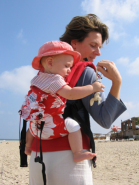Hair and Skin Care for African Children
/Adopting an African-American child, or a child from Ethiopia or other African countries? If African(-American) hair and skincare is foreign to you, these resources can help:
- Happy Girl Hair - LOVE this website by a local mom of two lovely twins from Ethiopia, one with tight coils, one with loose curls. Product reviews, and styling/braiding tips from simple to elaborate
- Adoption Hair and Skin Care, an active, non-judgmental YahooGroup
- Hair Matters, on RainbowKids
- African Hair Care, on Creating a Family
- "Does Good Hair Equal Good Parenting?"
- Hair Rules, from Adoptive Families (also has Asian and Hispanic hair tips)
- Chocolate Hair, Vanilla Care
- One of our families recommends food-grade grapeseed oil for scalp and skin, as it's less fragrant than olive or coconut oil, and both cheaper/purer than the versions in the cosmetic aisle
- Another family loves Alaffia shea/coconut hair lotion for longer/loose-curlier African-American hair, and recommend infrequent shampoo with daily refreshing: a bit of spray water, followed by this leave-in conditioner.
- You may also find local hair salons or agency classes helpful for hands-on help
As many of our multi-racial clinic families have learned, the painful way, many adults in the African-American community will view how you do or don't groom your child's hair as a marker for how well cared for they are. Hopefully in a helpful well-meaning way, but even then it's a hard thing to hear. Besides, children need to learn how to care for themselves, often want to "fit in" with others of their ethnicity, and want to look beautiful (or handsome) with the curls and coils they've got.













